Having a strong brand is essential for any business, especially in the salon industry.
A well-crafted and consistent brand identity will help you stand out from your competitors and attract more customers.
It also gives them an idea of what to expect when they visit your salon – quality services that are tailored to their needs.
But creating a salon brand is not always easy; it requires careful planning and execution.
That’s why in today’s article we built a four-step exercise to help you build:
Your Salon’s Mission;
The Perfect Client;
A Catchy Visual Identity;
Online and “Offline” Brand Alignment
Have in mind, as we dive into this topic, what sort of beauty salon owner or manager are you: a nail salon, a hair salon, and a make-up artist might have very different outputs from this exercise.
Scheduling software for hair salons →
Let’s do this:
1. Define what is your salon’s mission statement
Developing your salon branding starts with defining your mission statement. Your mission should aim to capture the essence of who you are as a business, such as your values, goals, or principles.
Another way to think of it is to determine what your salon is trying to achieve and how it intends to do it. For example, you might make it part of your mission to provide clients with the latest trends in hairstyling while ensuring every client leaves feeling confident and beautiful.
I understand this can be an overwhelming topic. After all, we are going deeper into the reason why you decided to go into the beauty business.
Why Appointible?
With that in mind, below you can find four key questions that can help you to define your salon’s mission – and thus your salon branding. Remember to answer them in order from A to C, as one serves as a precursor to the next:
A- Why am I doing this?
We start with the most fundamental branding question: why you are in the salon business? In other words, what is it that gets you up in the morning and makes you want to run a successful salon?
To answer this question, think of what values drive you. Is it to have people feel good about their looks? Maybe coziness, and offering a warm salon experience? Perhaps beauty itself?
B- What am I doing this for?
This is a tricky question and might seem like the previous one, just worded in a different way – but that’s not the case.
Approach this question by answering it in the following way: “so that…”
So that the world is a more beautiful place;
So that people would feel better about themselves;
So that my neighborhood has the salon it deserves;
In other words, what is it that you are trying to achieve in the beauty industry? In this question, you should think of your Mission above all.
C- What would happen if my salon’s mission is fulfilled?

After you defined your values in question A and your mission in question B, it’s time to think of a world in which your salon changed your clients’ lives for the better.
Here are some examples of answers:
People would go about the world feeling more self-confident;
Neighbors would spend less time looking for a good salon and focus on what truly matters to them.
Clients would feel good about their hair.
D- Synthesize your mission statement in a slogan
Now that we worked with questions A, B, and C, it’s time to craft one sentence that best represents those answers. In marketing, we call that phrase a slogan (or, more informally, a tagline).
Writing a slogan is a great way to synthesize your mission statement in a short phrase. Moreover, it is a piece of communication you can place under your logo, on your site, and in different marketing materials.
I will not give specific salon slogan ideas, as I might influence or bias the work you did so far. I will use the example of Avon, to illustrate how going from A to D might work for you.
Sidenote: the only real part here from Avon is the Slogan itself. A, B, and C are made up so we can imagine how this might have worked out for them:
A: Because we want people to be able to buy beauty products with maximum convenience;
B: So that anyone, anywhere, can feel the beauty in them;
C: People would have more beauty around them.
D: Avon’s slogan: “We make it easy, You make it beautiful!”
Whether you love or have this beauty brand, you can see how much they manage to squeeze out of the brand in one little phrase. And how much that can help build other marketing materials.
2. Define who is your ideal salon client
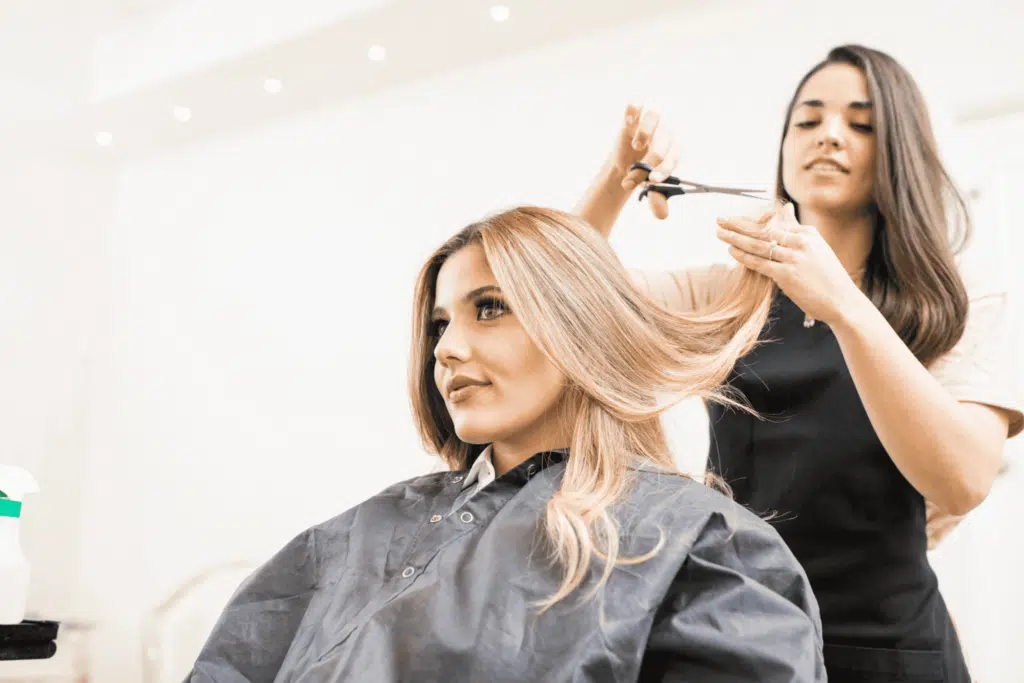
Getting your mission statement done should give you a good idea of who you are doing all of this for. And this is what we will see in the second pillar of a great salon brand: understanding who is your ideal salon client.
Your salon’s demographics
When it comes to demographics, it’s about the raw profile of your perfect client.
In other words, what age group do you want to target? Do you want to orient your services by gender? Is your target market premium?
The core idea is that, if you know the profile of your ideal salon customer, then it’s easier to tailor a better service or product for them.
Your client’s expectations

Your salon brand should be built around what are your client’s expectations of your salon. A strong brand will be able to communicate that, in your salon, their expectations will be met.
Ask yourself some of these questions to figure out what your audience expectations are:
What are they looking for when they come in?
Do they appreciate the convenience and speed? Or maybe they want a calm – and even longer – session?
Are they devoted to trying new styles? Or do they stay with tried and tested haircuts and nail designs?
Your salon brand attracts new clients and raises awareness in potential customers if it can quickly answer these questions for them.
Building a Buyer Persona
A crucial step in your salon branding is to build your salon’s buyer persona. Take the answers from questions A, B, C, and D and pair them with those you got in question 2 to create one image of who is the salon client you want to attract.
Essentially, a buyer persona is an imaginary representation of your salon’s ideal customer. It should have:
a name;
an age;
gender;
geographical location;
job role;
general description;
add a picture that best represents your buyer persona, too.
In a salon brand, this Buyer Persona will become a crucial reference point for your salon marketing efforts. You can use it to decide which salon services you should offer and how they should be priced. It also helps in creating a salon identity that resonates with your salon’s clientele.
Here is an example of how a potential buyer persona for a salon could look like:
Name: Jessica
Age: 27
Gender: Female
Location: Los Angeles
Job Role: Media Professional
Interests or Hobbies: Shopping, Traveling, and Reading.
Description: Jessica is looking for salon services that are convenient yet luxurious. She likes salon experiences that emphasize pampering and relaxation. She is willing to pay a premium for services that offer innovative techniques and quality products.
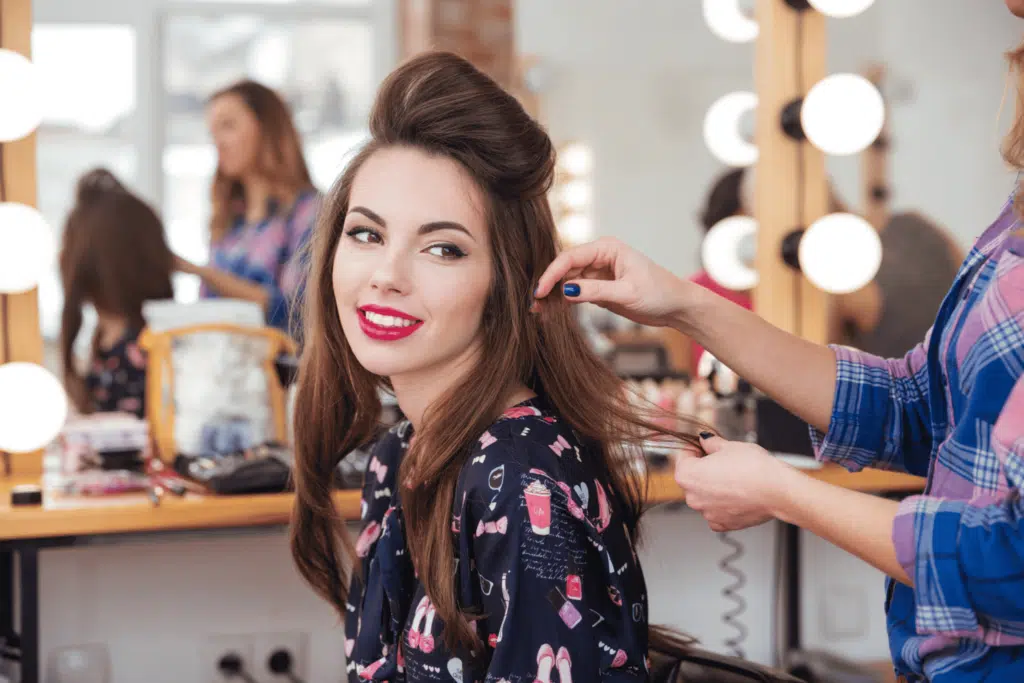
Having a buyer persona in place gives direction to your salon’s branding efforts. It will help you create salon marketing strategies that are better tailored to your salon’s audience, as well as make it easier to identify the correct channels of marketing for them.
This will make even more sense in the next step:
3. Create your brand’s visual identity
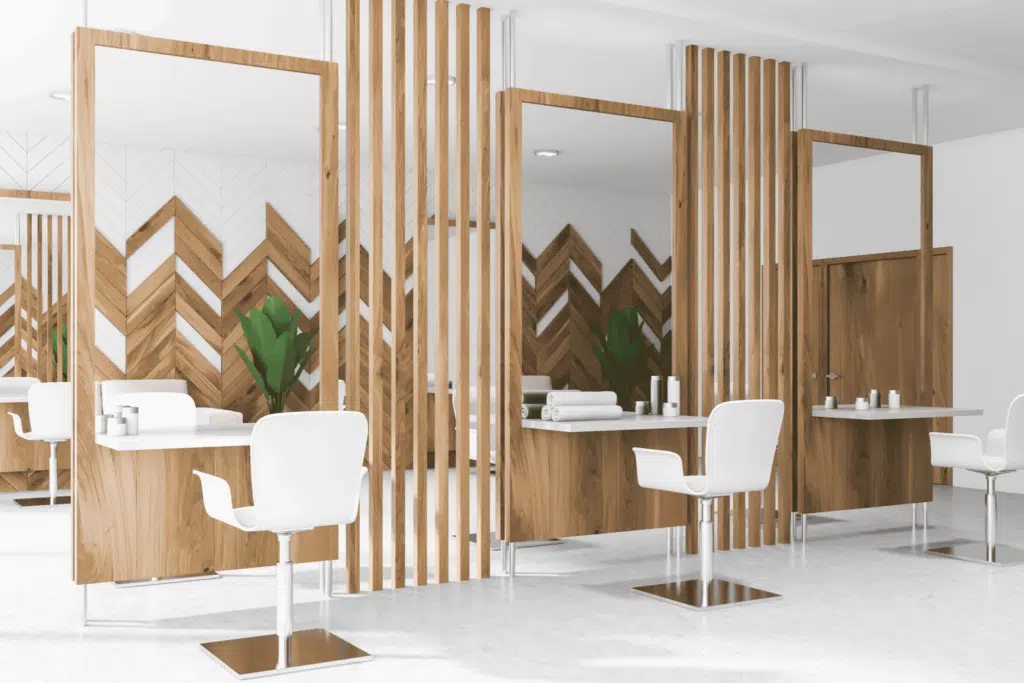
The third salon branding pillar is visual identity. Visual communication is a critical part of salon marketing, as it is in any other business involved with the beauty industry.
You will use your visual identity in places, so before you start creating salon collateral – such as salon brochures, social media designs, or business cards – it is important to define your salon’s visual identity.
Your salon’s visual identity should encompass all of the essential elements that will effectively communicate your salon brand and what you do. It should include:
Colors
Selecting what colors will be present in your brand identity can be tricky. Colors that are too bright and vibrant might be overwhelming to clients, while colors that are too plain or pastel can easily blend in.
Remember that colors evoke emotions and associations and it’s important that you select those that fit your salon’s message.
A good tip is to refer back to the buyer persona you built for your salon brand.
For example, if you find out that your salon’s target audience is young women who are looking for salon services that emphasize pampering and relaxation, try to include calming colors in the visual identity of your salon brand.
However, if your salon’s target audience is young men looking for salon services that emphasize convenience and speed, try to include more vibrant colors in the visual identity of your salon brand.
Fonts
Fonts are a great way to showcase your bran’s style. For example, if your salon is more modern and trendy, you could use more modern font styles like sans serifs and slab serifs. On the other hand, if your salon has an old-school vibe to it, you could use fonts with classic origins like serifs, old-style typefaces, or script fonts.
Just as with the colors, use your buyer persona as a reference when choosing the fonts. For example:
If your salon’s audience is young and professional, you could use fonts that evoke a sense of reliability or sophistication, such as Open Sans or Lato. However, if it is more creative, you could use fonts that evoke a sense of imagination or freedom, such as Lobster Two or Pacifico.
Imagery
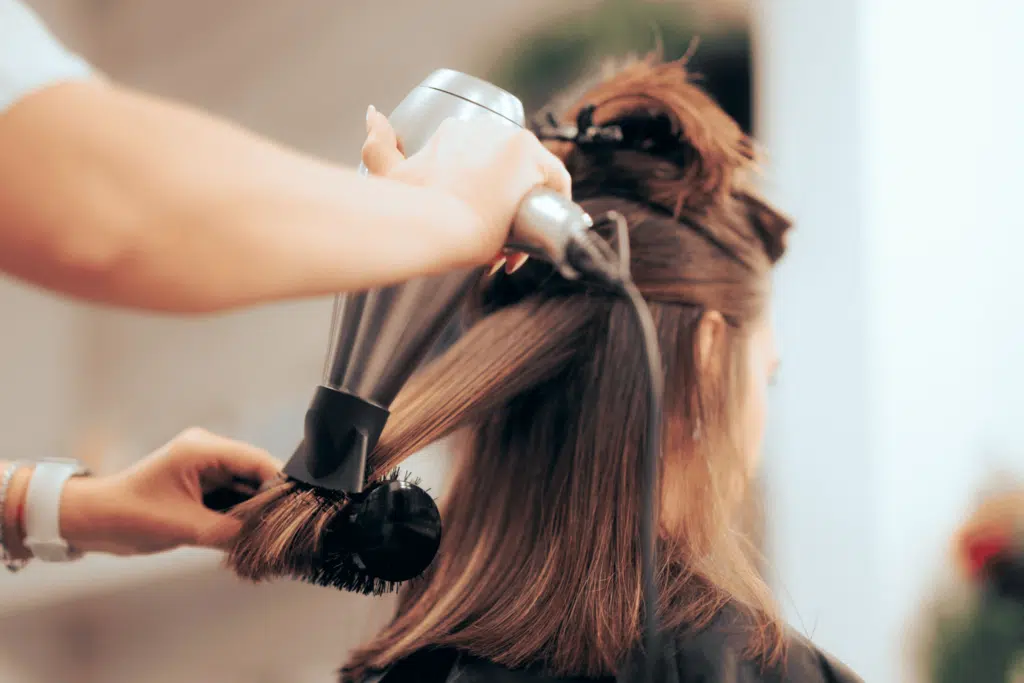
The imagery you use in salon collateral should be consistent with the salon’s brand identity. Try to avoid generic stock photos and opt for visuals that represent your salon. Use, as many as possible, pictures you took yourself, or hire a professional photographer to capture the salon’s atmosphere.
Using visuals that are specific to your salon brand will help you create more personalized salon marketing materials and give customers an idea of what they can expect from the salon.
It’s important to remember that salon branding is a long-term investment, so it pays off to invest time and resources into creating original visual content (such as salon photos, salon logos, and salon videos) that will help you differentiate from the competition.
Craft your Salon Logo
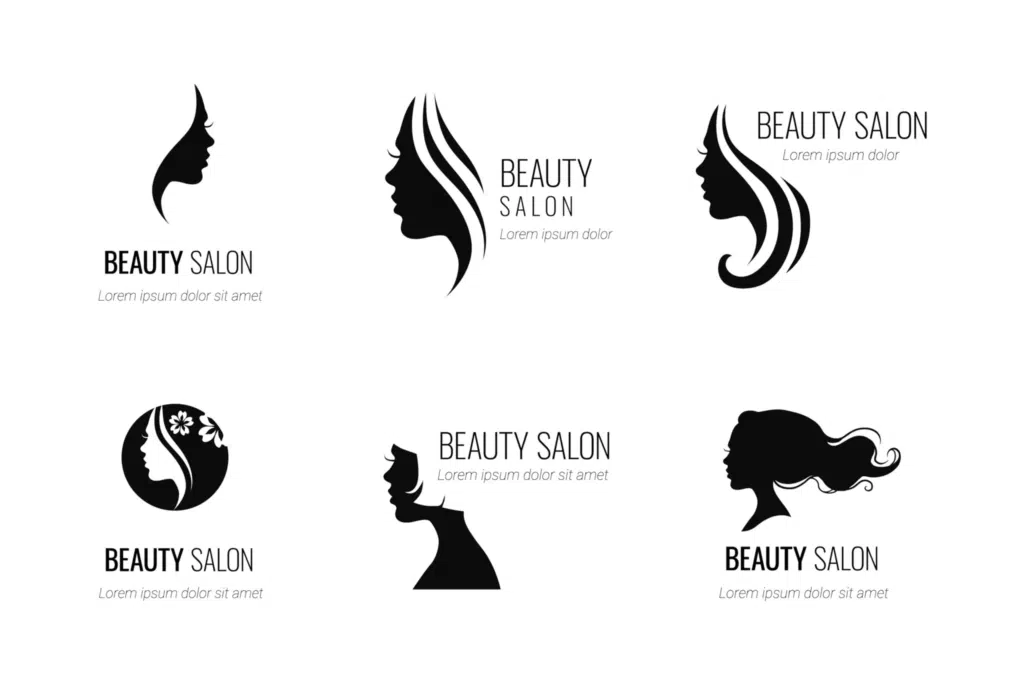
Just as a slogan can synthesize your mission statement in a catchy phrase, your salon logo should also communicate your brand in a single image. It should be memorable and recognizable, while at the same time, it should accurately reflect the salon’s core values.
Your salon logo will likely be used across all salon marketing channels, so you must take the time to properly design it. You can either hire a professional to do it for you or use design websites to create your salon logo. And if you opt for the latter, check the next tip:
Recommended tool
A fantastic place where you can develop the visual identity – including a logo – of your salon brand is Canva.com.
We have no affiliation with them. This is advice that even we at Appointible follow when we are building some of our marketing materials. Be sure to check it out since they offer a comprehensive free plan (just as Appointible does, by the way).
4. Align your online brand with your offline one
The final pillar for your salon brand is making sure your salon’s online presence is consistent with its offline presence. Or, in other words, a potential customer that sees a post on your social media would recognize your brand by entering your salon.

When we think of online presence, we think of salon websites, salon social media accounts, and salon directories. When speaking of offline presence, we refer to salon storefronts, staff uniforms, salon decor, etc.
Your salon’s online and offline brands should sync to create a cohesive customer experience. Ensure your salon visuals, fonts, and colors are consistent online and offline. Use the same colors and font styles across all
The more consistent the visual identity of your salon is across both online and offline channels, the stronger your salon brand will become in a very competitive market.
Furthermore, keep a similar template for all digital collateral (e.g., salon website or salon emails).
5. Bonus: salon brand in Social Media
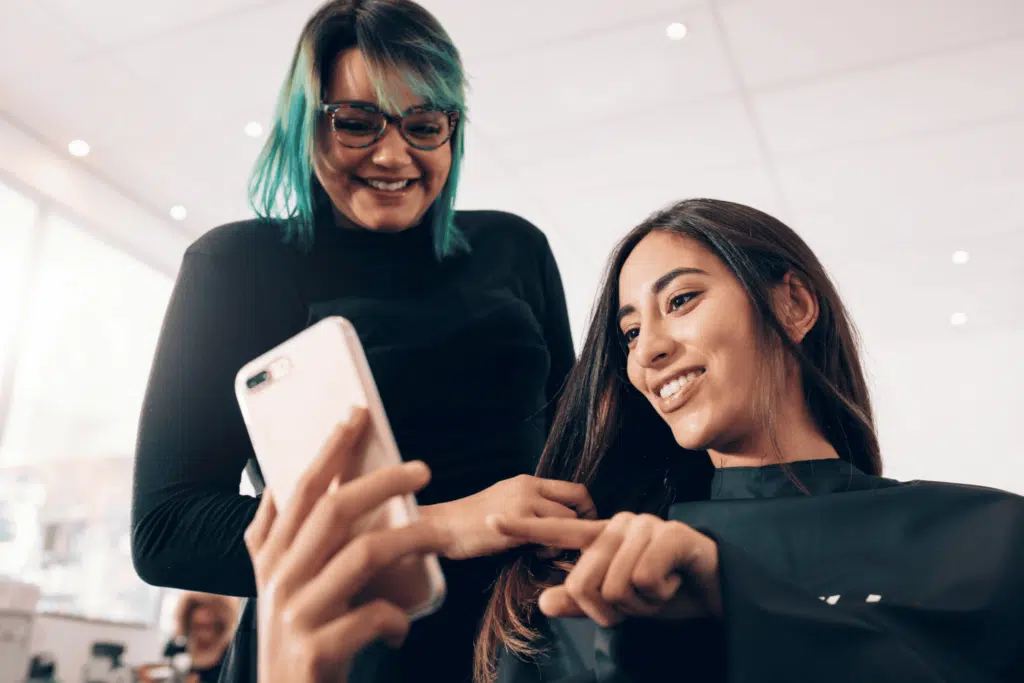
We added a bonus tip for you: social media presence. Facebook, Instagram, and other social channels play a huge role in salon branding. You can use your salon’s social media channels to reach new clients, build a strong community of salon enthusiasts and drive more sales.
If you want to understand better how to correctly show your salon brand on social media, be sure to check out this article with 20 ideas for a salon’s social media posts.
Conclusion
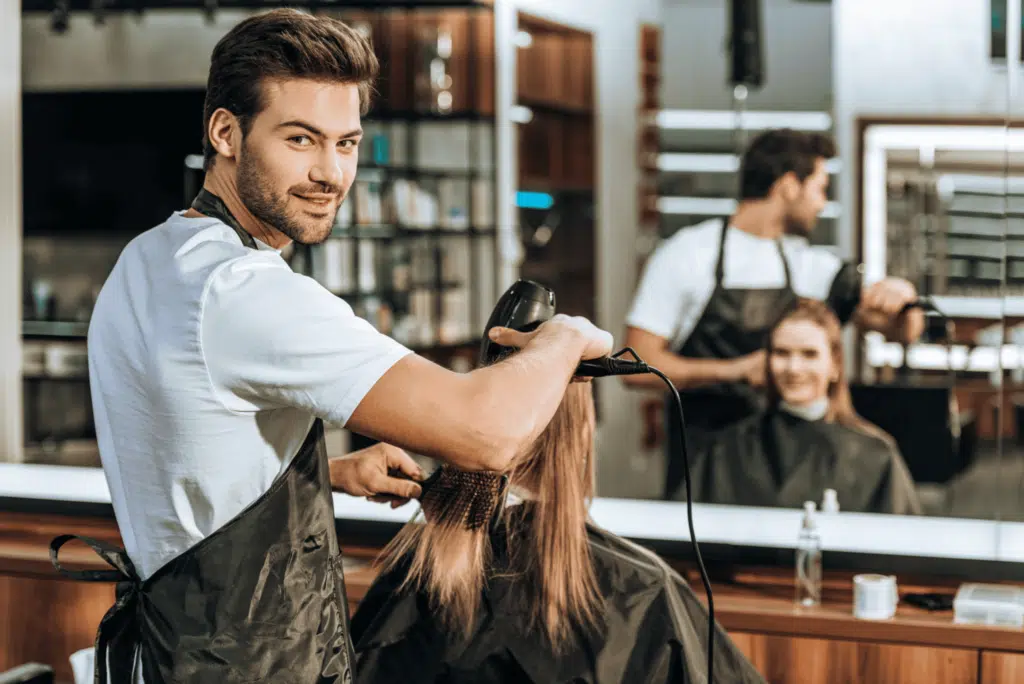
In conclusion, salon branding is an essential aspect of salon marketing. From creating visual content to aligning your salon’s online presence with its offline one, there are multiple strategies you can use to build a lasting salon brand in the beauty services industry.
We hope these tips help you improve salon brand recognition and stand out. Good luck!
